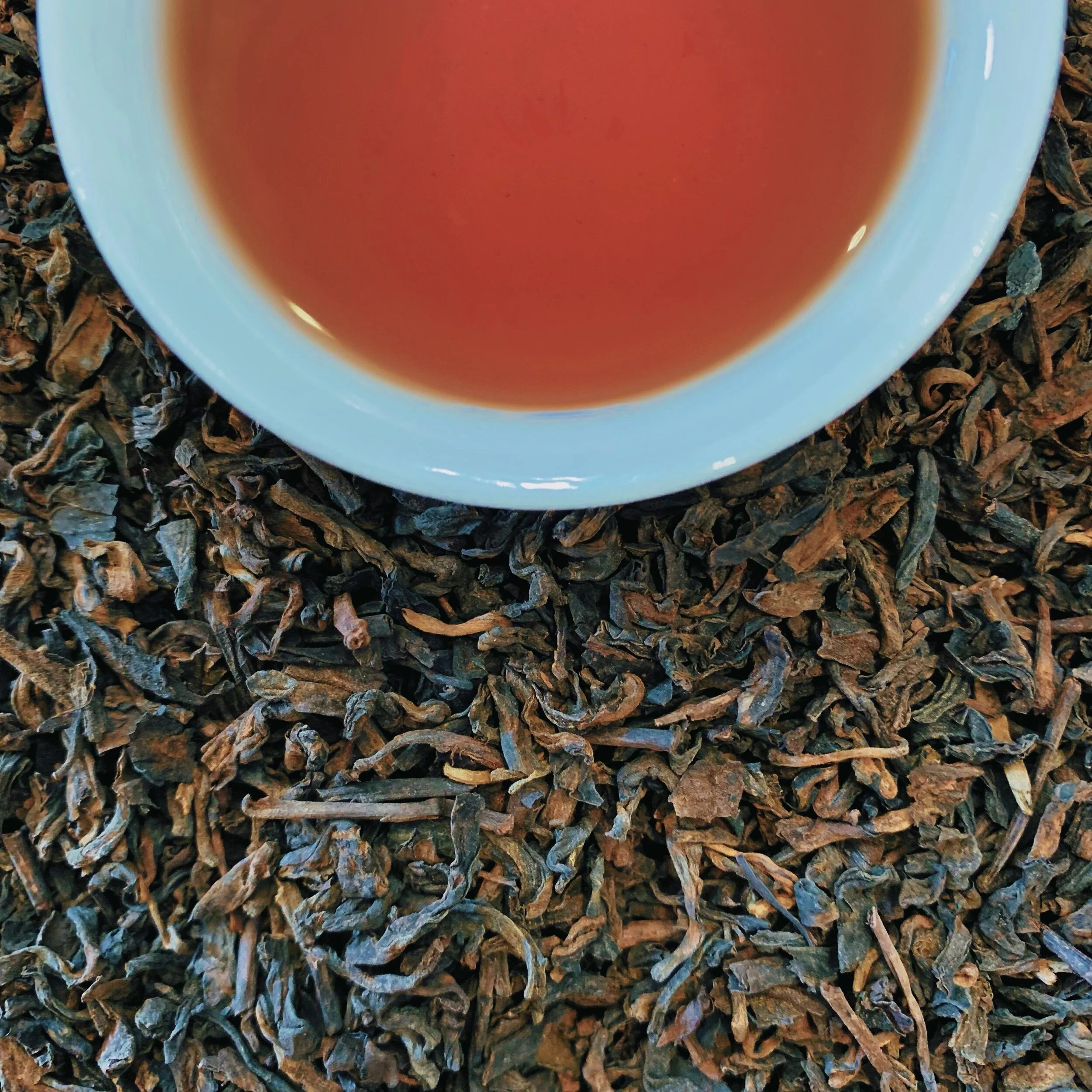Young Pu-erh
A 1-year vintage pu-erh with a deep, robust flavor and hints of dampness reminiscent of a forest floor. The slight musty notes add to the complexity of the tea, creating an intriguing taste experience.
INGREDIENTS: Black Tea
ORIGIN: China
REGION: Yunnan
AROMA: Mild and earthy with musty notes
INFUSION: Burgundy with golden highlights
BREWING INSTRUCTIONS:
1-2 tsp. per 8 oz. water
Steep at 100ºC/212ºF for 3-5 mins.
A 1-year vintage pu-erh with a deep, robust flavor and hints of dampness reminiscent of a forest floor. The slight musty notes add to the complexity of the tea, creating an intriguing taste experience.
INGREDIENTS: Black Tea
ORIGIN: China
REGION: Yunnan
AROMA: Mild and earthy with musty notes
INFUSION: Burgundy with golden highlights
BREWING INSTRUCTIONS:
1-2 tsp. per 8 oz. water
Steep at 100ºC/212ºF for 3-5 mins.
A 1-year vintage pu-erh with a deep, robust flavor and hints of dampness reminiscent of a forest floor. The slight musty notes add to the complexity of the tea, creating an intriguing taste experience.
INGREDIENTS: Black Tea
ORIGIN: China
REGION: Yunnan
AROMA: Mild and earthy with musty notes
INFUSION: Burgundy with golden highlights
BREWING INSTRUCTIONS:
1-2 tsp. per 8 oz. water
Steep at 100ºC/212ºF for 3-5 mins.
Pu-erh tea, renowned for its medicinal properties, is made from the leaves of the Yunnan Dayeh variety of tea tree, which is believed to be closely related to the original tea tree from pre-glacial times. The history of pu-erh dates back to the 1200s when it was introduced to the rest of China by the troops of Kubla Khan, who valued it for its medicinal benefits.
Traditionally, pu-erh has been used to alleviate indigestion, dysentery, and is also believed to aid in reducing cholesterol levels. While claims about its health benefits have varied, studies at Kunming Medical College claim that pu-erh may help lower cholesterol and triglyceride levels. Others believe that pu-erh can assist with digestion, fluid secretion, thirst quenching, spleen invigoration, and detoxifying the body from alcohol toxins. It seems that until further research is completed, the purported health benefits of pu-erh differ depending upon what part of the world you are in.
The production process involves picking the tea leaves, rolling them, withering them in the sun, steaming, and pressing them into cakes. This pu-erh is broken up from the cakes for easier use. The steaming and compression without drying the leaves completely result in a musty and earthy character. Aging and, in some cases, slight moldiness contribute to the unique qualities of pu-erh. Like wine, young pu-erh is considered less valuable, while aged pu-erh, typically five years or older, is highly prized. With age, the taste of pu-erh becomes mellower and may be more appealing to Western palates.
The flavor of pu-erh has been described as mellow, but it may take some getting used to for those unfamiliar with its "aged" character. Some individuals recommend blending pu-erh with chrysanthemum florets to make the taste more palatable. In fact, this blend is available in teahouses in southern China and Hong Kong. Pu-erh is also a main ingredient in Kombucha, a fermented tea beverage.
While the exact extent of pu-erh's medicinal properties is still being studied, its distinct flavor, long history, and unique production process make it a tea with a special allure and appeal to tea enthusiasts.


